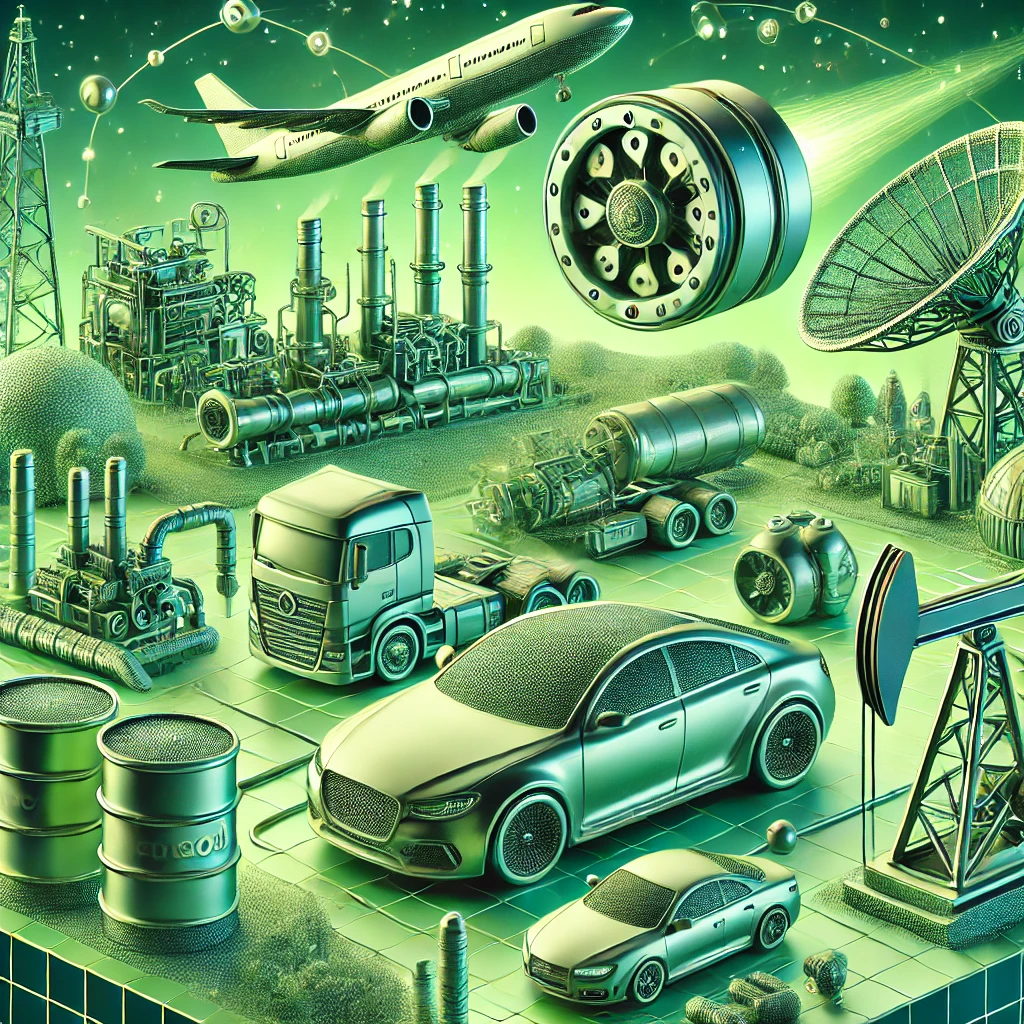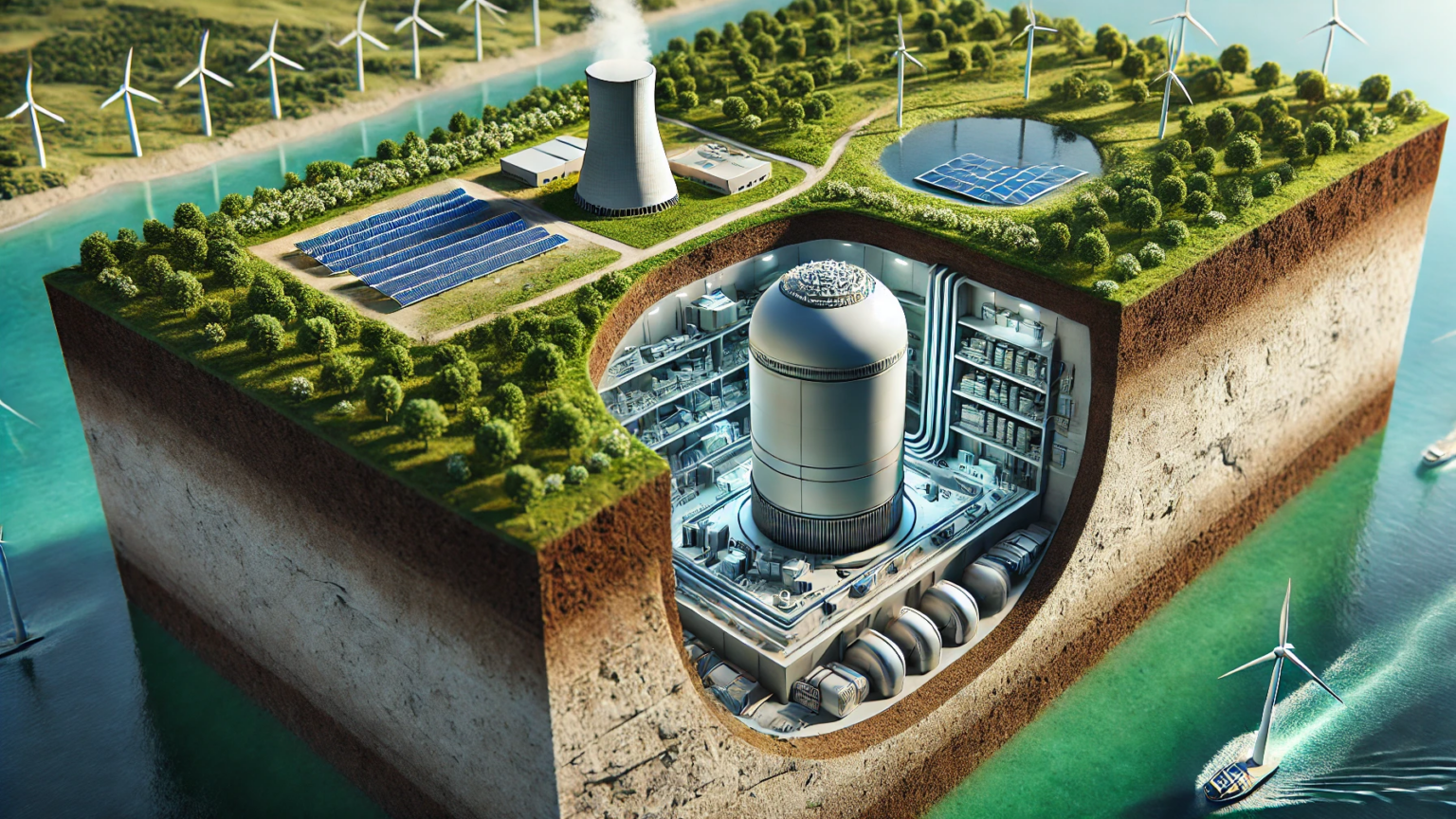Rare Earth Elements (REEs) are a group of 17 chemically similar elements known for their unique properties and vital role in modern technology. Despite their name, they are not particularly rare in the Earth’s crust, but they are challenging to extract and refine.
REEs are indispensable in various high-tech industries, including electronics, renewable energy, and national defense. They contribute to the functionality and efficiency of countless devices and technologies.
In this article, we will delve into the history, properties, and applications of Rare Earth Elements. We will explore their critical role in electronics, clean energy technologies, and national security. Additionally, we will discuss the environmental impact of REE mining and look ahead to the future of these essential elements.
The Discovery and Early Use of Rare Earth Elements
The discovery of REEs dates back to the late 18th century, but it wasn’t until the 19th century that they were isolated and recognized as a distinct group of elements. This period marked the beginning of their use in various industries.
Early applications of REEs included coloring agents for glass and ceramics, as well as catalysts in the production of fertilizers and petroleum products.
The 20th century witnessed a significant increase in the use of REEs, especially in electronic devices, leading to their designation as “technology metals.”
The Hidden World of Rare Earth Elements
REEs exhibit unique properties, such as magnetic susceptibility and fluorescence, which make them crucial components in a wide range of advanced technologies.
Their ability to emit specific wavelengths of light under certain conditions is exploited in displays and lighting technologies, while their magnetic properties are vital for data storage and transmission.
How REEs Differ from Other Elements
REEs stand out from other elements in the periodic table due to a combination of distinctive electron configurations and atomic properties. These unique characteristics make them irreplaceable in specific applications across various industries. Here’s a more detailed exploration of how REEs differ from other elements.
- Electron Configurations
REEs are often referred to as the “lanthanides” because they all have similar electron configurations. Specifically, their outermost electron configurations involve the filling of the 4f orbitals, which results in their unique chemical behavior. This configuration leads to the intriguing magnetic and optical properties that set REEs apart.
- Magnetic Properties
One of the most notable differences between REEs and other elements is their magnetic behavior. REEs are known for their strong magnetic properties, which arise from the unpaired electrons in their 4f orbitals. This characteristic makes them crucial in various applications where magnetism plays a vital role, such as in the development of powerful permanent magnets used in electric motors, MRI machines, and magnetic resonance spectrometers.
- Optical Properties
REEs exhibit exceptional optical properties that are not commonly found in other elements. Some rare earth ions, such as europium and terbium, are known for their ability to emit specific wavelengths of light when exposed to certain energy sources. This property is utilized in phosphor materials for lighting, fluorescent lamps, and the color displays of television screens and computer monitors.
- Chemical Reactivity
The unique electron configurations of REEs also result in their distinctive chemical reactivity. They tend to form stable compounds with other elements, and their oxidation states are well-defined and predictable. This predictability makes them valuable in catalysts used in various chemical reactions and industrial processes such as catalysis and petrochemicals, environmental remediation, metallurgy, and alloy development, pharmaceuticals and health care, glass and ceramics, electronics and semiconductor manufacturing, and environmental monitoring and sensors.
- Atomic Size
REEs have relatively large atomic sizes compared to some other elements, and this affects their ability to fit into crystal lattices and form stable compounds. This characteristic makes them essential in certain alloys and ceramics, contributing to the desired properties of materials used in high-temperature applications and electronics.
- Coexistence in Nature
Unlike some elements that are more abundant in isolation, REEs typically exist in combination with one another, forming deposits known as rare earth minerals. This coexistence in nature makes it challenging to extract and refine individual REEs, but it also ensures a consistent supply of these elements for various applications.
Rare Earth Elements’ Critical Role in Electronics
REEs in smartphones, laptops, and tablets are integral to these devices’ functionality, compactness, and overall performance. The incorporation of REEs in these critical components results in several benefits:
-
- Compact Size: REEs contribute to the miniaturization of electronic components, allowing manufacturers to design thinner and lighter devices without sacrificing performance.
-
- Improved Performance: The use of REEs in screen displays, speakers, and batteries enhances the overall performance, quality, and user experience of these electronic gadgets.
-
- Energy Efficiency: REEs help increase the energy efficiency of electronic devices, extending their battery life and reducing energy consumption.
Let’s delve into how REEs are utilized in these electronic gadgets
Screen Displays
REEs, particularly cerium and europium, play a vital role in the manufacturing of screens and displays in smartphones, laptops, and tablets. These elements are incorporated into phosphors, which are compounds that emit specific colors of light when exposed to electron beams or other energy sources.
In these devices, phosphors are used in various types of screens, including liquid crystal displays (LCDs) and organic light-emitting diode (OLED) displays. The precise control over color and brightness provided by REE-based phosphors contributes to vibrant and high-resolution displays, ensuring a superior viewing experience for users.
Speakers
Rare Earth Elements, such as neodymium and praseodymium, are essential for the production of high-performance speakers and audio systems found in smartphones, laptops, and tablets. These elements are used in the creation of powerful neodymium magnets.
Neodymium magnets are known for their remarkable strength and ability to generate strong magnetic fields within compact dimensions. In audio devices, these magnets enable the production of clear and crisp sound quality in small, slim speaker designs, enhancing the overall audio experience for users.
Battery Materials
REEs, including lanthanum and cerium, are utilized in rechargeable battery technologies, such as lithium-ion batteries, which are commonly used in smartphones, laptops, and tablets. These elements are employed as additives in the cathode materials of these batteries.
Lanthanum and cerium additives can improve the stability and cycling performance of lithium-ion batteries, making them more reliable and longer-lasting. This translates to longer battery life and improved energy storage capacity for portable electronic devices, allowing users to stay connected and productive for extended periods without frequent recharging.
REEs and Clean Energy Technologies
REEs play an essential role in advancing clean energy technologies, facilitating the global shift towards more sustainable energy sources. This importance extends to multiple areas.
Renewable Energy Technologies
REEs are pivotal components in the production of renewable energy technologies such as wind turbines and solar panels. They contribute to the efficient generation and storage of clean electricity, supporting the transition away from fossil fuels.
Wind turbines, for instance, incorporate REE-based magnets in their generators, enabling them to harness wind energy effectively. Similarly, solar panels use REEs in photovoltaic cells to convert sunlight into electricity efficiently.
Additionally, energy-efficient lighting systems, such as LED (Light Emitting Diode) technology, benefit from the improved performance and longevity offered by REEs. These lighting solutions contribute to reduced energy consumption and greenhouse gas emissions.
Electric Vehicles (EVs)
The automotive industry is increasingly turning to electric vehicles (EVs) as an eco-friendly alternative to traditional gasoline-powered cars. REEs are fundamental to the production of these EVs.
Rare Earth Elements are essential components in the manufacturing of advanced batteries used in EVs. These batteries offer high energy density and long-lasting performance, making electric cars practical and appealing to consumers.
Moreover, the electric motors in EVs often incorporate REE-based magnets, enhancing motor efficiency and power output. Regenerative braking systems, which recover and store energy during braking, also rely on REEs, further increasing the energy efficiency of electric vehicles.
Rare Earth Elements and National Security
REEs are integral to the development and functioning of advanced defense technologies that are vital for a nation’s security. These applications encompass a wide range of areas, including missile systems, radar technologies, night vision devices, and more.
In missile systems, REEs are used in guidance systems and propulsion, enabling precise targeting and long-range capabilities. The use of REE-based magnets and materials enhances the performance of radar systems, contributing to early warning systems and military communications.
Night vision devices heavily rely on REEs, particularly europium and terbium, to create the phosphors that amplify available light, allowing for effective nighttime and low-light operations by military personnel.
Dependence on Foreign Suppliers
One of the primary challenges related to REEs and national security is the heavy dependence of many countries, including major global powers, on imports for their supply of these critical elements. A significant portion of the world’s REE production comes from a limited number of countries, which can create vulnerabilities in the global supply chain.
Overreliance on foreign suppliers can pose substantial risks to a nation’s security. Geopolitical tensions, trade disputes, or supply chain disruptions in these supplier countries can result in shortages of REEs, potentially hampering the production and maintenance of essential defense technologies.
Efforts to Secure Domestic Sources
Recognizing the strategic importance of REEs, countries, and industries have been actively exploring strategies to secure domestic sources of these critical elements. This involves initiatives to develop or reopen domestic REE mines and processing facilities.
Diversifying the sources of REEs reduces a nation’s vulnerability to supply chain disruptions and geopolitical tensions. Governments have been providing support through funding research, development, and exploration projects to identify and develop domestic REE deposits.
Additionally, recycling and recovery programs are being encouraged to reduce reliance on primary mining and to tap into the potential reserves of REEs within electronic waste, thereby enhancing resource sustainability.
Environmental Impact of Rare Earth Element Mining
While REEs are indispensable for clean energy technologies, their extraction and processing can have environmental consequences. Mining and refining REEs can result in soil and water pollution and habitat disruption and pose health risks to nearby communities.
To mitigate these environmental concerns, responsible mining practices and recycling initiatives are essential. Sustainable and ethical sourcing of REEs, as well as efforts to reduce waste and recycle materials containing REEs, are becoming increasingly important in the industry.
The Future of Rare Earth Elements
As technology advances, new applications for REEs continue to emerge, including quantum computing, advanced medical imaging, and more efficient energy storage systems. Research and development efforts are focusing on improving the recycling and recovery of REEs from electronic waste and other sources, reducing the need for new mining.
The future of REEs lies in finding a balance between technological innovation and sustainable practices to ensure their availability for generations to come.
Investing in the Future: A Sustainable Path Forward for Rare Earth Elements with Noah Chemicals
Rare Earth Elements may remain hidden from the average person, but their influence on our daily lives and the future of technology is undeniable. As we navigate the challenges and opportunities associated with these elements, it is essential to prioritize their responsible use and protection for the benefit of both humanity and the planet.
With our commitment to responsible sourcing and environmental stewardship, Noah Chemicals stands at the forefront of providing these critical elements to industries worldwide, ensuring a reliable supply chain for the technologies of today and the innovations of tomorrow.
As we navigate the intricate landscape of Rare Earth Elements, it is imperative to recognize their significance and prioritize their responsible use and protection. These hidden treasures are the key to unlocking the potential of modern technology. With Noah Chemicals as your partner, we can continue to innovate and improve our world for generations to come.




